Technical Context
One of our proposed designs involves the use of panels on the façade of Acopian to depict a large art mural or several smaller pieces. The use of panels provides flexibility and proven durability. Exterior art murals have been created for a variety of purposes and have continued to show off their meaning and colors for many years. Philadelphia has a popular mural called “We the Youth” that has been on display since 1987. Some more contemporary pieces like “Evolution of the Bike” in St. Louis was created in 2012. Art murals are technically feasible and continue to be painted today.
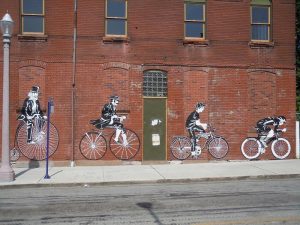
Figure 12: “Evolution of the Bike” (Evolution of the Bike, n.d)
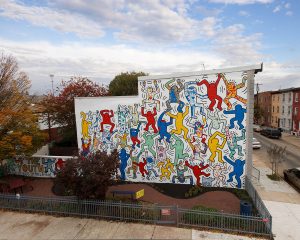
Figure 13: “We the Youth” (Kochman et. al, n.d)
The use of panels applied to the exterior façade of Acopian creates a non-invasive method to the structure of the building and can introduce a path to allow flexibility on the images presented on the wall. As time goes on the meaning of an art piece can be misunderstood as the intended audience changes and grows. It is not possible to control the community, but through the use of panels the school is given an option to change the presented images into a more effective depiction of Acopian’s changing culture in the future.
The technical process regarding the implementation of the panels is the main factor that allows for the switches. There are 5 essential steps to ensure the mural is appealing and durable. First, the location must be inspected. Constant direct sunlight and moisture, like a sprinkler constantly spraying the wall, will deteriorate the quality of the mural even with the correct exterior paint. Next comes surface preparation. The surface must be clean of residue paint and mildew otherwise the adhesion process become more difficult. Through use of the panels majority of this step will be by passed but an acceptable surface will increase the overall effectiveness of the application process. Applying the paint to the panels is the next part. This will involve several steps and because of the panels an artist can work inside a controlled environment like a studio until the time of application on the facade. A sealer and primer have to be applied to the boards. The sealer lowers chances for the wood to warp and protects the material. A primer prepares the surface of the board to improve adhesion of the paint. Two coats of exterior acrylic paint should then be applied for the decided images. The direction of paint application should follow the furthest image of the mural to the closest image and darker colors applied before lighter colors. The final step is a medium gloss varnish as the final layer which includes an “extra shine” to the mural and also adds another layer of protection against constant wear and tear (“Mural Making Process – Department of Art & Art History,” 2018).
There were two possible designs involving a mural on the exterior facade of Acopian. The first image represents an idea of Acopian from a side perspective but “cutting away” the wall and allowing the public to see the multiple activities and programs that are possible inside of Acopian. During the presentation of the newest science building of Lafayette, the Rockwell integrated science center, this idea was shown to allow viewers gain an idea of what would be going on inside the new building. Our group felt this concept of being able to see the inside of a building from the outside could be powerful and appealing to the members of the community. Visitors do not have to walk each floor to gain an initial understanding and the mural will gauge the interest of these viewers. These images would represent the culture of engineering at Lafayette after analysis of the social and political contexts. The other option would be multiple smaller images on panels that also represents a positive view of Acopian but instead of using the same images for the rest of their life span on exterior, there would be a new set panels that depict the current time of Acopian to allow new generations to resonate with the building in the future. The second image helped guide our group towards this concept because there was a sense of multiple areas or efforts coming from different directions to represent and support one common theme. There is a range of age, environments, and styles of cloth being represented in one wholistic image and the final result of everyone’s effort in the mural is a peaceful world. Seeing the various aspects of the design leading to one powerful idea is a powerful medium to represent the multiple majors creating a more interdisciplinary and collaborative environment inside Acopian. The two art pieces responsible for our group’s inspiration is shown below.
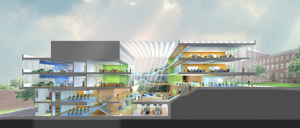
Figure 14: Cut-away mural (“Lafayette College Plans Integrated Science Center,” n.d.)
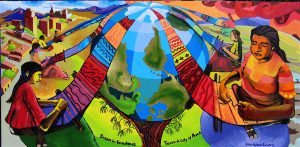
Figure 15: The local earth vision (“Community Visioning Workshop,” April 2013)
Our final concept for a mural incorporates the two above mentioned ideas. Our group wanted to ensure we keep the ability to clearly display aspects that represent a more positive culture inside of Acopian. Also, keeping the idea of multiple factors influencing one common theme is important because more than one effort is necessary to achieve a new culture. Understanding these two important features results in a practical design where we might not use all areas of the facade of Acopian but try to use as much as possible to get viewers interested in the mural and start to talk about the new possibilities inside Acopian.
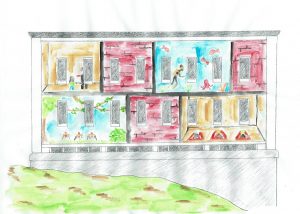
Figure 16: Final mural concept design as created by Olivia Guarna (2018)
Economic Context
The economic dimensions of the mural project will fluctuate depending on multiple factors. Morgan mural studios is a company that specializes in creating murals. They published a case study in 2015 detailing the process of a public mural art project in Redwood City, California. One of their sections cover the cost estimate for a public mural. They said,
The cost of a mural is typically between $20-$40 per square foot. This estimate is inclusive of design, materials, wall prep, and labor. Some of the variables affecting this range include geographic region, the condition of the wall, the experience of the artist, and the level of detail desired in the mural painting. (Bricca et. Al, 2015, Pg. 8)
Many factors are accounted towards creating a mural. The price range comes with many tangible factors that become clearer as a project progresses. Another example of an estimate about the price range of murals comes from the Philadelphia Department of Recreation Mural Arts Program. They conducted a case study in 2001 to help more members of the community understand the value of public art works and attempt to increase professional opportunities for artists to work on public murals. The estimates they produced for an average mural cost was between $10,000 and $15,000. This included artist’s commission, the scaffolding, the paint, the brushes, and other painting supplies (Stern et. Al, 2003, Pg. 33). The study also provided a closer look at the fees of an artist. This ranged from $2,800 to $24,600 because sometimes the project required more than one artist, or a person would design while others would paint (Stern et. Al, 2003, Pg. 33). Settling on the cost of an artist is an important factor leading to the rest of the project budget. In particular, the progression of design ideas would benefit from having an already chosen artist to work on the project. The Pittsburgh Art council published a guide on how to properly develop public art murals similar to the efforts of the Philadelphia Mural Arts program. Considering design development and the role of the artist the author said,
If you want the artist to collaborate with anyone to develop the content, be sure that you are clear about that in the beginning and that the artist agrees to that process. Or, if the artist wants to gather their own group of people to collaborate with or find inspiration in other community resources, help the artist connect with that they need. (Brown, n.d)
The artist has a core role during the early stages of the project and must be considered during future stages. They have immediate input during the implementation process of the art piece like necessary materials which alters the price range.
Artists work with certain vendors and companies because of the trust created from previous projects or recommendations. The artist should be given the freedom to work in this aspect because it will promote a more comfortable environment to work and lead to a higher quality product. Sherwin-Williams is a very large and popular vendor who have endless options regarding exterior acrylic paint so pricing from their site seemed applicable. The prices for exterior acrylic paint on their site ranged from $47.99 per gallon to $87.99 per gallon. The price change is mainly influenced by the gallons of paint that have a level of primer mixed with the paint for increased quality. However, gallons of primer are also available, and majority of prices are in the range of $56.99 per gallon to $62.99 per gallon. The type of brush used also comes with its own set of pricing. A brush that supports acrylic paint and best used for exterior work is the Purdy XL Glide recommended by Sherwin-Williams. The price varies because of the various sizes of available brush widths. The smallest is 1-½” at $13.59. The largest available is 3-½” at $24.19. The final prices for art murals are difficult to estimate during the early stages of research, but as more information is presented and decisions are made regarding the artist it will be easier to apply a more reasonable cost for this project.
To read about our second design alternative, click here.